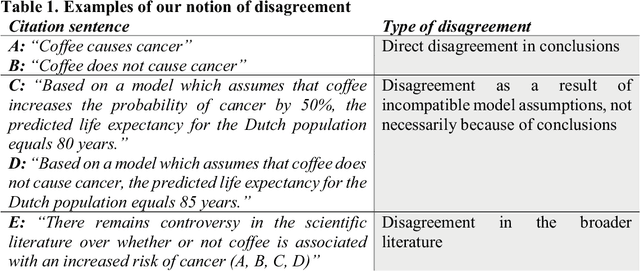Dakota Murray
School of Informatics, Computing, and Engineering, Indiana University Bloomington, IN, USA
Measuring Disagreement in Science
Jul 30, 2021



Abstract:Disagreement is essential to scientific progress. However, the extent of disagreement in science, its evolution over time, and the fields in which it happens, remains largely unknown. Leveraging a massive collection of scientific texts, we develop a cue-phrase based approach to identify instances of disagreement citations across more than four million scientific articles. Using this method, we construct an indicator of disagreement across scientific fields over the 2000-2015 period. In contrast with black-box text classification methods, our framework is transparent and easily interpretable. We reveal a disciplinary spectrum of disagreement, with higher disagreement in the social sciences and lower disagreement in physics and mathematics. However, detailed disciplinary analysis demonstrates heterogeneity across sub-fields, revealing the importance of local disciplinary cultures and epistemic characteristics of disagreement. Paper-level analysis reveals notable episodes of disagreement in science, and illustrates how methodological artefacts can confound analyses of scientific texts. These findings contribute to a broader understanding of disagreement and establish a foundation for future research to understanding key processes underlying scientific progress.
Unsupervised embedding of trajectories captures the latent structure of mobility
Dec 04, 2020



Abstract:Human mobility and migration drive major societal phenomena such as the growth and evolution of cities, epidemics, economies, and innovation. Historically, human mobility has been strongly constrained by physical separation -- geographic distance. However, geographic distance is becoming less relevant in the increasingly-globalized world in which physical barriers are shrinking while linguistic, cultural, and historical relationships are becoming more important. As understanding mobility is becoming critical for contemporary society, finding frameworks that can capture this complexity is of paramount importance. Here, using three distinct human trajectory datasets, we demonstrate that a neural embedding model can encode nuanced relationships between locations into a vector-space, providing an effective measure of distance that reflects the multi-faceted structure of human mobility. Focusing on the case of scientific mobility, we show that embeddings of scientific organizations uncover cultural and linguistic relations, and even academic prestige, at multiple levels of granularity. Furthermore, the embedding vectors reveal universal relationships between organizational characteristics and their place in the global landscape of scientific mobility. The ability to learn scalable, dense, and meaningful representations of mobility directly from the data can open up a new avenue of studying mobility across domains.
 Add to Chrome
Add to Chrome Add to Firefox
Add to Firefox Add to Edge
Add to Edge